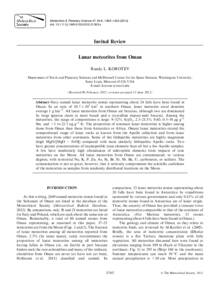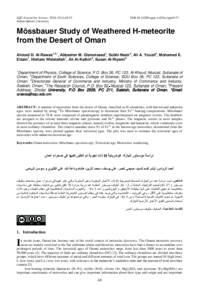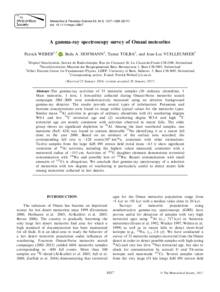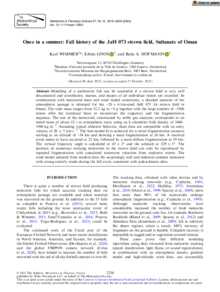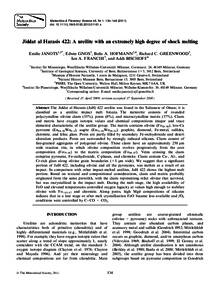Document
Lunar meteorites from Oman.
Identifier
DOI: 10.1111/j.1945-5100.2012.01393.x
Publisher
The Meteoritical Society.
Gregorian
2012-08
Language
English
Subject
English abstract
Sixty named lunar meteorite stones representing about 24 falls have been found in Oman. In an area of 10.7×10 3km 2 in southern Oman, lunar meteorite areal densities average 1gkm -2. All lunar meteorites from Oman are breccias, although two are dominated by large igneous clasts (a mare basalt and a crystalline impact-melt breccia). Among the meteorites, the range of compositions is large: 9-32% Al 2O 3, 2.5-21.1% FeO, 0.3-38μgg -1 Sm, and <1 to 22.5ngg -1 Ir. The proportion of nonmare lunar meteorites is higher among those from Oman than those from Antarctica or Africa. Omani lunar meteorites extend the compositional range of lunar rocks as known from the Apollo collection and from lunar meteorites from other continents. Some of the feldspathic meteorites are highly magnesian (high MgO/[MgO+FeO]) compared with most similarly feldspathic Apollo rocks. Two have greater concentrations of incompatible trace elements than all but a few Apollo samples. A few have moderately high abundances of siderophile elements from impacts of iron meteorites on the Moon. All lunar meteorites from Oman are contaminated, to various degrees, with terrestrial Na, K, P, Zn, As, Se, Br, Sr, Sb, Ba, U, carbonates, or sulfates. The contamination is not so great, however, that it seriously compromises the scientific usefulness of the meteorites as samples from randomly distributed locations on the Moon.
Member of
ISSN
1086-9379
Resource URL
Category
Journal articles

